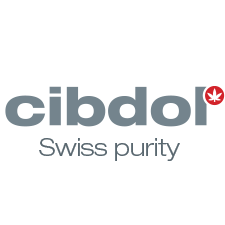A Deeper Look Into CBD As A Treatment For Eczema
Last updated:
Published:

CBD has gained impressive traction within recent years as a non-psychoactive substance with vast medicinal benefits. Laws surrounding the chemical are relaxing, and it is now available on a vast scale.
Cannabinoids like CBD exert their effects primarily by influencing the endocannabinoid system. This system is found all throughout the human body in the form of receptor sites existing on the membranes of many different cell types. These are the CB1 and CB2 receptors. Cannabinoids have an affinity for these receptors, successfully binding to them by mimicking chemicals already produced within the body called endocannabinoids.
CBD has a low affinity for both the CB1 and CB2 receptor, yet exerts its profound effects by affecting them indirectly. CBD is also known to bind to other receptor types in the body such as the vanilloid, capsaicin, serotonin, and GPR55 receptors.
CBD AND THE SKIN
The reason why CBD has such a wide scope of applications is in part due to the abundance of cannabinoid receptors throughout the body. Cannabinoids will produce an effect on whatever cells these receptors show up on. It just so happens that the endocannabinoid system exists in the skin, which is why CBD can soothe the symptoms of irritable conditions such as eczema.
Research has discovered that the endocannabinoid system in the skin is associated with various biological processes such as proliferation, growth, differentiation, apoptosis, and hormone production. Moreover, the disruption of the endocannabinoid system in the skin can result in the development of multiple associated pathologies such as psoriasis, hair growth disorders, dermatitis, and acne.
WHAT IS ECZEMA?
Eczema, also referred to as atopic dermatitis, is a common skin condition featuring itchy and inflamed patches on the skin. Although eczema may only present as a slight itch in some people, in others it can become overwhelmingly uncomfortable, markedly reducing one’s quality of life. The condition is more common in young children, but can affect people at any age.
Atopic dermatitis is the most common form of eczema, but other forms do exist. Contact dermatitis is a form of eczema brought of by coming into contact with irritants, resulting in redness and itching.
Dyshidrotic dermatitis is type of eczema that primarily occurs on the fingers, palms, and bottom of the feet. This results in scaly and flaky patches of skin. Nummular dermatitis is a type that often arises during the winter months, and seborrheic dermatitis is a form that occurs on the face and behind the ears.
The primary symptoms of eczema are itchy, dry, rough, scaly, and inflamed patches of skin. These can form anywhere, but the inner elbows, backs of the knees, and head are most commonly affected. Red and brown patches can also develop, along with small raised bumps.
Eczema still remains a bit of a mystery within medical and scientific circles, as its root cause is still not fully understood. It’s believed to be triggered by an overreaction of the immune response. In some cases, the immune system begins to attack proteins in parts of the body it usually ignores, resulting in inflammation.
There are many different triggers that can result in eczema. These include chemical irritants, food allergies, stress, sweating, changes in temperature, and shifts in humidity.
CONVENTIONAL TREATMENT
Common treatments for eczema include antihistamines and steroid creams (to curb itching), however, they come with an array of side effects that render them unfavourable in some cases. Light therapy is also used in attempt to clear up eczema.
Lifestyle changes to minimise stress are also employed. Meditation, yoga, and breathwork can help reduce the physiological reactions to stress, such as elevated heart rate and hormone release.
ABOUT CIBDOL ZEMADOL
Zemadol is a class 1 medical device, specifically formulated to support the recovery of irritated and dry skin caused by atopic dermatitis. The primary active ingredient within Zemadol is colloidal oatmeal, which supports the skin with a coating of polysaccharides to soothe and calm irritated areas. Colloidal oatmeal also contains avenanthramides, which help to reduce sensitivity and inflammation.
Zemadol is infused with Cannabis sativa extracts possessing a high concentration of CBD. CBD has been shown to penetrate the skin with ease, making it a suitable topical treatment. University of Colorado researchers have stated the effectiveness of CBD for treating the symptoms of eczema, testifying to its ability to serve as a natural alternative to steroid creams.
CBD targets immune cells, keratinocytes, and sebocytes via cannabinoid receptors. This results in a suppression of the immune and inflammatory processes.
Zemadol boasts high absorption rates due to the use of liposomes within the formula. Liposomes are tiny vesicles made up of one or more bilayers that contain an aqueous core. These structures serve as protective vessels to carry molecules safely to their desired cellular destination without any premature degradation occurring.








.png)




